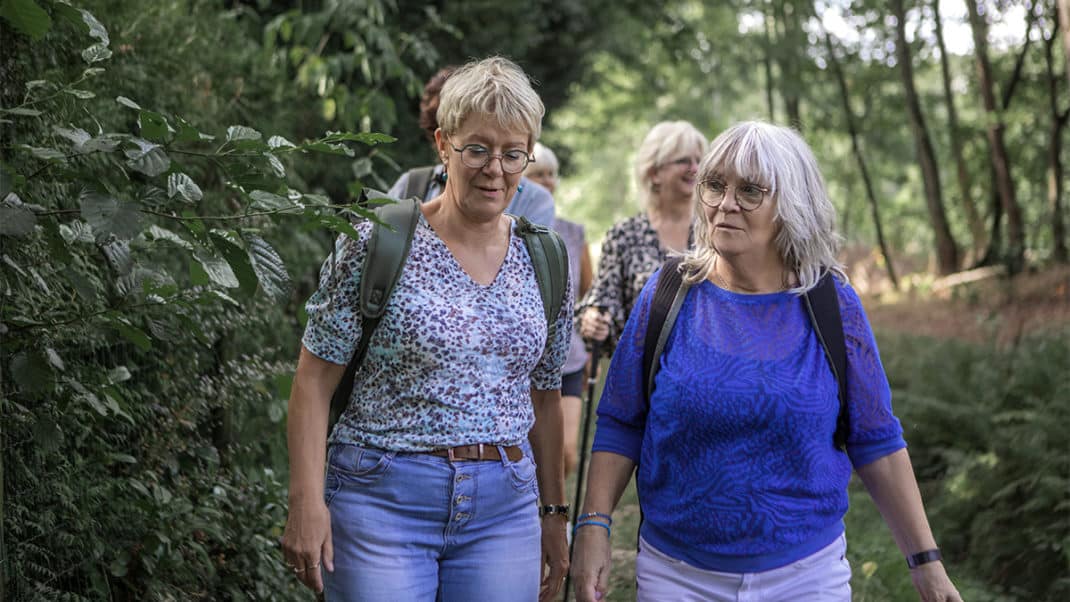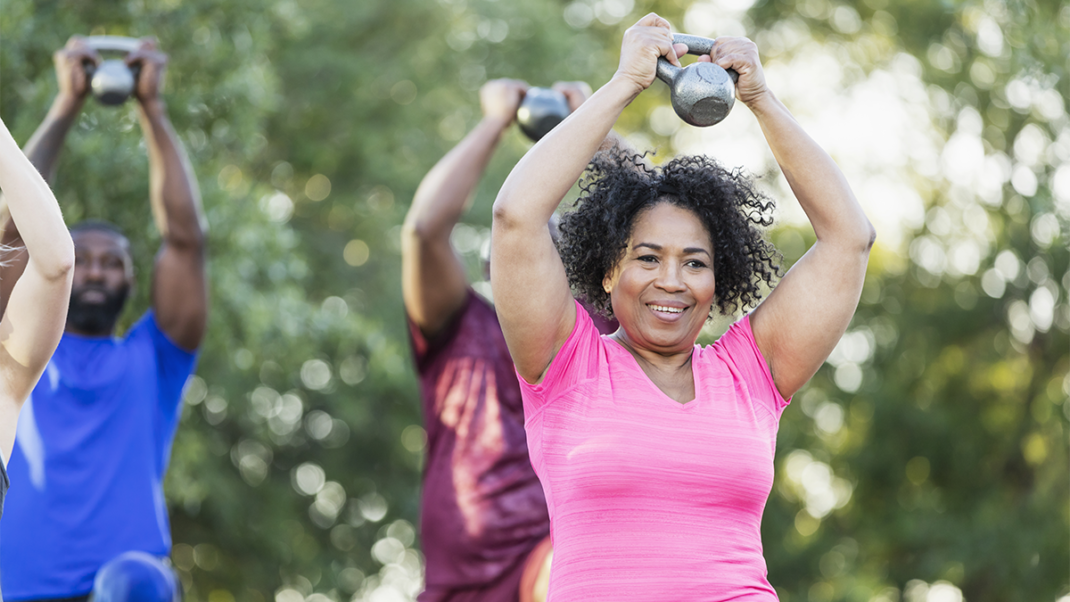Training People With Disabilities
Exercise interventions for those with four common disabilities.
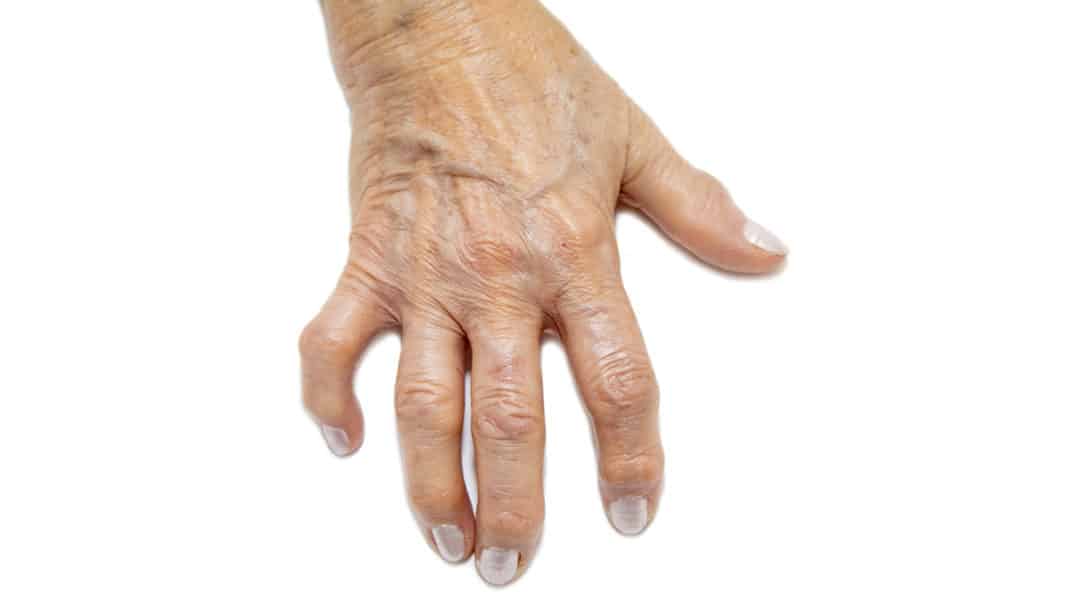
One in four adults in the United States is reported to have a disability (Okoro et al. 2018), and the growing population of people with disabilities can put a considerable demand on medical services and senior program costs. Yet, a disability does not automatically preclude an ability to train.
Fitness professionals can help. Expanding the availability of evidence-based physical activity interventions can help improve the quality of life for people with disabilities and lessen the deleterious effects of their conditions. In this research column, we provide exercise recommendations for clients with four common disabilities: arthritis, hearing disabilities, visual impairments and intellectual disabilities.
Physical Activity Matters for People With Disabilities
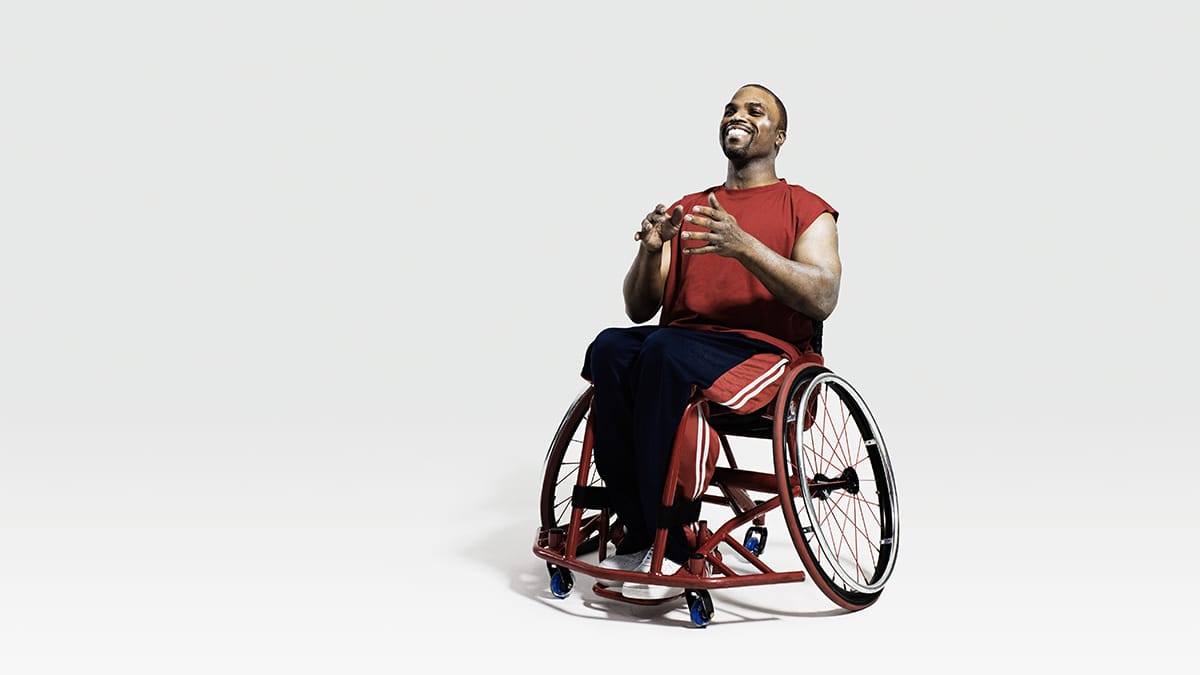
Regular physical activity is associated with positive outcomes in muscular strength, functional skills, psychosocial well-being, cardiometabolic health and decreased body composition in PLWD.
According to Ginis et al. (2021), people living with disabilities (PLWD) have poorer health than the general population and are at a greater risk for developing chronic diseases, injuries and age-related health conditions at earlier stages of life. The researchers submit that 16%–62% of PLWD are less likely than those without disabilities to meet physical activity guidelines for a variety of reasons (see “Fitness and Recreation Program Barriers for PLWD,” below).
The good news is that evidence from Ginis and colleagues also shows that regular physical activity is associated with positive outcomes in muscular strength, functional skills, psychosocial well-being, cardiometabolic health and decreased body composition in PLWD.
Before you begin working with persons with any type of disability, it’s important to obtain a list of medications they are taking and become aware of any possible contraindications to exercise. You may also find it helpful to speak with their healthcare provider. Then consider these exercise programming options, tailored to meet the needs of those with disabilities.
See also: Create Inclusivity for Special Populations
Arthritis
Arthritis is the most common cause of physical disability in the U.S., impacting approximately 54.6 million adults (Guglielmo et al. 2021). Arthritis is associated with a reduced quality of life that can also negatively impact a person’s work productivity (e.g., limitations in writing, typing, lifting and walking) through lost time and diminished physical function (Levy et al. 2012). Clients of all ages who have arthritis will often have disease-related obesity and a loss of muscle mass (Lange et al. 2019).
Exercise Programming
Initially, inform clients with arthritis that there is no documented evidence that exercise will do further harm to their joints (Lange et al. 2019). Next, evaluate each client’s physical capabilities. Find out their attitude regarding their condition, discuss what type of physical activities they have access to and are interested in doing, and help them develop meaningful lifetime movement goals. Interestingly, exercise programs for people with arthritis are more effective when supervised (Kolasinski et al. 2020).
According to the Centers for Disease Control and Prevention (CDC 2018), men and women with arthritis should follow the 2018 Physical Activity Guidelines for Americans for active adults or active older adults (whichever matches their age and ability). (Learn more in “Inside the Latest Physical Activity Guidelines” at www.ideafit.com.) We encourage a multicomponent exercise approach (i.e., aerobic activity, muscle strengthening and balance training).
As an initial target goal for the aerobic exercise component, the Physical Activity Guidelines suggest that adults ages 65 and older participate in aerobic exercise at moderate intensity (relative to the person’s fitness level) for 30 minutes or more each day. The American College of Rheumatology/Arthritis Foundation Guideline recommendations submit that walking (i.e., treadmill or indoor fitness walking) is the most popular form of exercise researched with arthritis studies (Kolasinski et al. 2020). Some studies have successfully used group cycling. Kolasinski et al. add that aquatic exercise is also a favorable option.
For muscle strengthening, a power training and/or resistance training approach is recommended. A suggestion from the Physical Activity Guidelines is to do muscle strengthening training two times per week for the major muscle groups of the body. Start with single-set training, and then increase the intensity prior to adding sets.
Hearing Disabilities
Okoro et al. report that nearly 6% of the population in the U.S. has a hearing disability. Hearing loss will impair a person’s spoken language, and it may negatively impact cognition (the mental process of acquiring knowledge) and social well-being (Haile et al. 2021). Akinoğlu & Kocahan (2019) summarize research indicating persons who are hard of hearing have lesser ability to move their body extremities independently, control the speed of their movements, maintain static balance and perform dynamic coordination of their body as compared with people with “normal” hearing. People with hearing disabilities may have difficulty performing daily activities that involve balance.
Exercise Programming
Training programs should be customized to the individual’s specific needs and limitations (Reich & Lavay 2009). Walowska, Bolach & Bolach (2018) highlight that since hearing loss may impair control of balance and muscle coordination, trainers should focus attention on exercises associated with maintaining balance.
Although there are currently no national guidelines for exercise programming for people who are hard of hearing, Baek et al. (2021) evaluated the practical outcomes of a community-based exercise program with men and women ages 40 and older with auditory, visual and physical impairments. In this 3-month study, the researchers had participants combine 30 minutes of strength training (moderate-intensity band training of the major muscle groups) with 30 minutes of aerobic exercise (moderate-intensity [RPE 11–14] indoor cycling) twice a week. Participants attained a decrease in body mass index and percentage of body fat and an increase in sit-to-stand strength after 12 weeks of participation.
Akinoğlu & Kocahan summarize research indicating that sporting activities are practical interventions for individuals who are hard of hearing. Sports participation will help this population increase their muscular strength, balance skills, psychomotor abilities and physical fitness.
Fit pros working with those with hearing disabilities should adapt their teaching according to their clients’ needs. For example, understand how far away you can stand from your clients so they can hear you. Face your clients and make eye contact when giving exercise instructions. Consider turning down (or off) distracting fans, air conditioners and music when giving verbal instructions. Keep verbal instructions short and precise, demonstrating exercises whenever possible (Reich & Lavay 2009).
See also: Adapt Your Personal Training Space for People With Disabilities
Visual Impairments
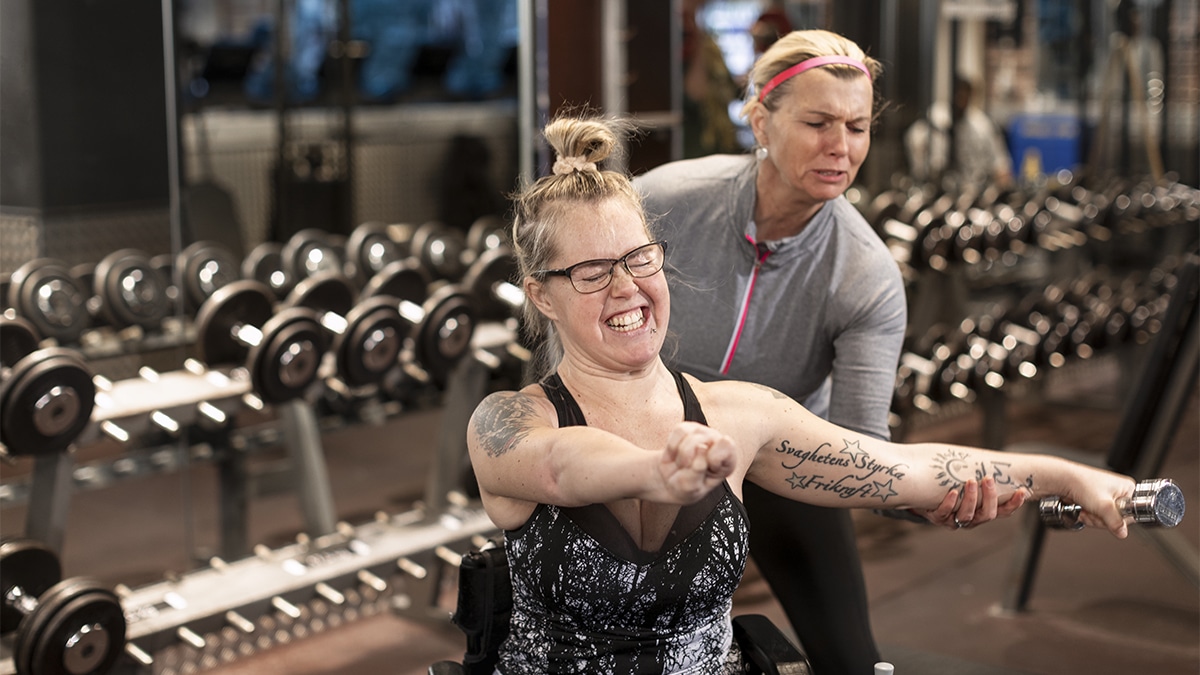
Feedback is critical when training people with visual disabilities.
More than 1 million people in the U.S. are blind, and over 3.2 million people have vision impairments (CDC 2020). Malik et al. (2021) state that people with visual impairments are less likely to participate in physical activity than their sighted peers, and Morelli, Foley & Folmer (2010) add that people with low vision are at greater risk to develop obesity. Notably, visually impaired clients often have difficulty seeing movement cues—especially fast directional arm and hand movements—provided via the mirrors in a class.
Exercise Programming
Encourage adults with visual impairments to safely engage in moderate-to-vigorous physical activity and reduce sedentary time (Haegele & Zhu 2021). Individualizing the Physical Activity Guidelines for a client’s needs and abilities appears to be a prudent plan for fitness pros to follow.
Feedback is critical when training people with visual disabilities. Use descriptive verbal instructions whenever possible, providing step-by step directions and using familiar cues for body positions in exercise (Malik et al. 2021).
Emphasize exercise safety. Ray & Wolf (2008) explain that older visually impaired persons may have difficulty walking because of a compromised ability to preview their environment. Balance and gait difficulties in older adults are associated with increased fall risk and poor balance confidence. Provide a variety of balance exercises in the exercise program.
Intellectual Disabilities
In 2010, President Obama passed Rosa’s Law, which replaced the term mental retardation with intellectual disability when referenced in federal law. Persons with intellectual disabilities have difficulty in processing, responding and communicating. They have a deficit in cognitive functioning and social domains (Jacinto et al. 2021).
Those with intellectual disorders tend to be sedentary and have a higher mortality rate than the general population (Messent, Cooke & Long 1998). They also have a higher prevalence of obesity, hypertension and metabolic syndrome (Jacinto et al. 2021). However, Messent, Cooke & Long (1998) note that weight management goals are achievable for persons with mild-to-moderate intellectual disabilities, emphasizing the importance of promoting exercise.
Exercise Programming
In a systematic review, Jacinto and colleagues proposed that resistance exercise programs—up to three sessions a week, lasting 45–60 minutes—are beneficial. Selecting six or seven different exercises (avoiding free weights) and performing 2 or 3 sets of 6–12 repetitions has been shown to result in increases in strength and balance and decreases in fat and waist circumference in adults with intellectual disabilities.
Regarding aerobic exercise, the World Health Organization recommends that adults living with a disability (including intellectual) should strive to complete at least 150–300 minutes of moderate-intensity aerobic physical activity; or at least 75 minutes of vigorous-intensity aerobic physical activity; or an equivalent combination of moderate- and vigorous-intensity activity throughout the week (WHO 2020).
See also: The Power of Exercise for the Autism Community
The Ability to Help People With Disabilities
Fit pros are well-positioned to help PLWD overcome obstacles to health inequities by providing personalized and group instruction and introducing health-promoting behaviors. You can make a positive difference in the lives of PLWD! It is time. Go for it!
Fitness and Recreation Program Barriers for PLWD
Potential Client Barriers
- perception of staff as unfriendly/negative/uninformed about disabilities
- self-consciousness about using the facility
- fear of the unknown
Potential Facility Barriers
- inaccessibility to wheelchairs (doors, restrooms, front desk, equipment, classes, pools, etc.)
- lack of adaptive or well-maintained equipment
- no service-animal policy
- weather (snow, ice, etc.)
- expenses (membership, gear, etc.)
- transportation (cost, availability, parking issues, etc.)
Potential Staff Barriers
- lack of knowledge about disabilities
- inability to adapt equipment and/or programs
- lack of empathy and support
Source: Rimmer et al. 2004.
References
Akinoğlu, B., & Kocahan, T. 2019. Stabilization training versus equilibrium training in karate athletes with deafness. Journal of Exercise Rehabilitation, 15 (4), 576–83.
Baek, S., et al. 2021. Community-based aerobic exercise program for primary prevention of cardiovascular disease in adults with visual or auditory impairments: A feasibility study. Annals of Rehabilitation Medicine, 45 (3), 204–14.
CDC (Centers for Disease Control and Prevention). 2018. Physical activity for arthritis. Accessed Mar. 31, 2022: cdc.gov/arthritis/basics/physical-activity-overview.html.
CDC. 2020. The burden of vision loss. Accessed Mar. 9, 2022: cdc.gov/visionhealth/risk/burden.htm.
Ginis, K.A.M., et al. 2021. Participation of people living with disabilities in physical activity: A global perspective. The Lancet, 398 (10298), 443–55.
Guglielmo, D., et al. 2021. Walking and other common physical activities among adults with arthritis—United States, 2019. Morbidity and Mortality Weekly Report, 70 (40), 1408–14.
Haegele, J.A., & Zhu, X. 2021. Movement behaviors, comorbidities, and health-related quality of life among adults with visual impairments. Disability and Rehabilitation, doi:10.1080/09638288.2021.1906333.
Haile, L., et al. 2021. Hearing loss prevalence and years lived with disability, 1990–2019: Findings from the Global Burden of Disease Study 2019. The Lancet, 397 (10278), 996–1009.
Jacinto, M., et al. 2021. Prescription and effects of strength training in individuals with intellectual disability—A systematic review. Sports, 9 (9), 125.
Kolasinski, S.L., et al. 2020. 2019 American College of Rheumatology/Arthritis Foundation guideline for the management of osteoarthritis of the hand, hip, and knee. Arthritis & Rheumatology, 72 (2), 220–33.
Lange, E., et al. 2019. Effects of aerobic and resistance exercise in older adults with rheumatoid arthritis: A randomized controlled trial. Arthritis Care and Research, 71 (1), 61–70.
Levy, S.S., et al. 2012. Evaluation of a multi-component group exercise program for adults with arthritis: Fitness and Exercise for People with Arthritis (FEPA). Disability and Health Journal, 5 (4), 305–11.
Malik, J., et al. 2021. Determining a taxonomy of accessible phrases during exercise instruction for people with visual impairments for text analysis. The 23rd International ACM SIGACCESS Conference on Computers and Accessibility (ASSETS ’21), October 18–22, 2021, doi.org/10.1145/3441852.3476567.
Messent, P.R., Cooke, C.B., & Long, J. 1998. Physical activity, exercise and health of adults with mild and moderate learning disabilities. British Journal of Learning Disabilities, 26 (1), 17–22.
Morelli, T., Foley, J., & Folmer, E. 2010. Vi-bowling: A tactile spatial exergame for individuals with visual impairments. In Proceedings of the 12th International ACM SIGACCESS Conference on Computers and Accessibility (ASSETS ’10), doi.org/10.1145/1878803.1878836.
Okoro, C.A., et al. 2018. Prevalence of disabilities and health care access by disability status and type among adults—United States, 2016. Morbidity and Mortality Weekly Report, 67 (32), 882–87.
Ray, C.T., & Wolf, S.L. 2008. Review of intrinsic factors related to fall risk in individuals with visual impairments. Journal of Rehabilitation Research & Development, 45 (8), 1117–24.
Reich, L.M., & Lavay, B. 2009. Physical education and sport adaptations for students who are hard of hearing. Journal of Physical Education, Recreation and Dance, 80 (3), 38–49.
Rimmer, J.H., et al. 2004. Physical activity participation among persons with disabilities: Barriers and facilitators. American Journal of Preventive Medicine, 26 (5), 419–25.
Walowska, J., Bolach, B. & Bolach, E. 2018. The influence of Pilates exercises on body balance in the standing position of hearing impaired people. Disability and Rehabilitation, 40 (25), 3061–69.
WHO (World Health Organization). 2020. WHO Guidelines on Physical Activity and Sedentary Behaviour. Geneva: World Health Organization.
Len Kravitz, PhD
Len Kravitz, PhD is a professor and program coordinator of exercise science at the University of New Mexico where he recently received the Presidential Award of Distinction and the Outstanding Teacher of the Year award. In addition to being a 2016 inductee into the National Fitness Hall of Fame, Dr. Kravitz was awarded the Fitness Educator of the Year by the American Council on Exercise. Just recently, ACSM honored him with writing the 'Paper of the Year' for the ACSM Health and Fitness Journal.
Adriana Lucero, MS
Adriana E. Lucero, MS, is a doctoral candidate in the Physical Education Teacher Education Program with a minor in educational psychology at the University of New Mexico in Albuquerque, where she works as a teaching and research assistant in the department of health, exercise and sports sciences. Lucero is an ACE-certified personal trainer with research interests in adapted physical education, as well as strategies for teaching, social and emotional learning, and assessment in physical education.



